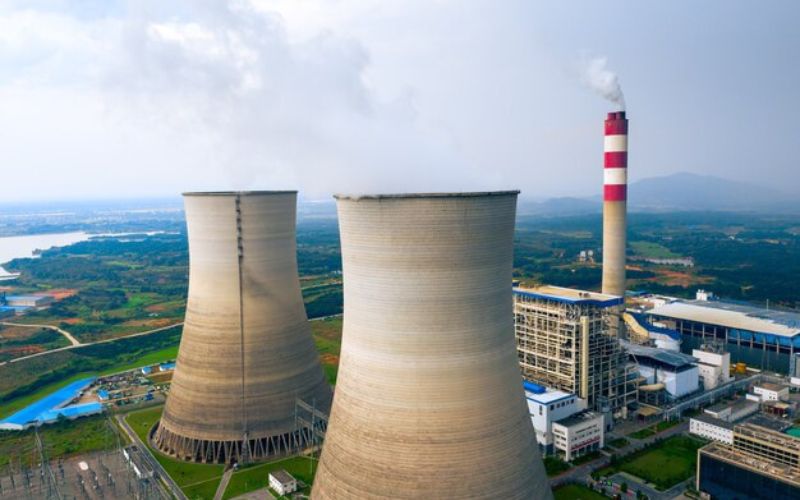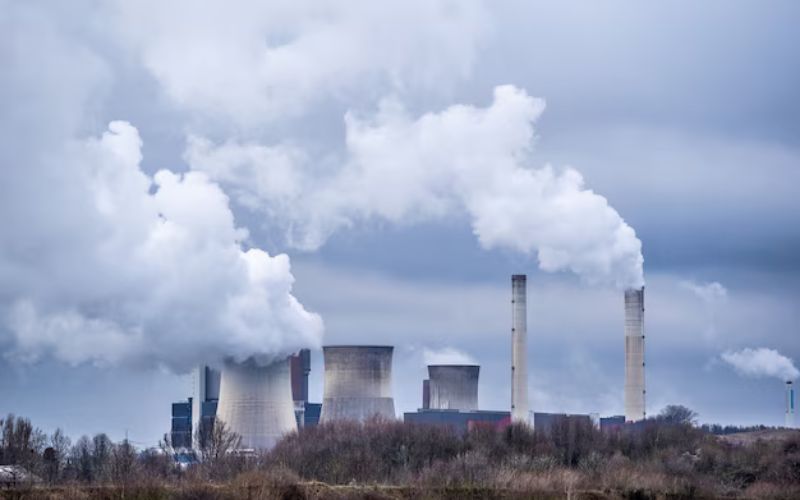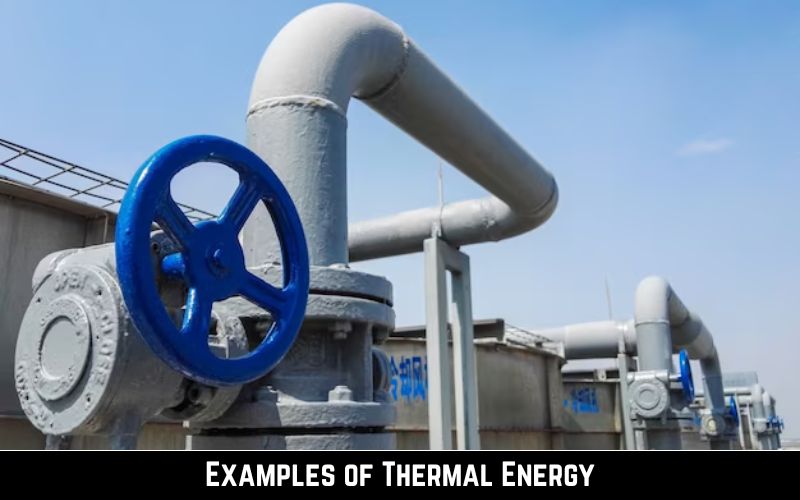Some common examples of thermal energy are solar collectors, Earth’s Subsurface Heat, Campfires, Cooking, and Metabolism.
Thermal energy is the energy that a system possesses due to its temperature. It is the energy present in an object or system because of the movement of its atoms and molecules. When these particles move quickly, the object or system has higher thermal energy. Thermal energy can refer to various physical concepts, such as internal energy or enthalpy of a body of matter and radiation, heat, and the characteristic energy of a degree of freedom. It is a type of kinetic energy that can be transferred as heat.
Read Now: Examples of Potential Energy
Examples of Thermal Energy
Here are 12 examples of thermal energy are;
✰ Solar Thermal Energy: Solar Collectors
Solar thermal energy harnesses the heat from the sun using solar collectors. These collectors absorb sunlight and convert it into thermal energy.
Activity
- Sunlight Absorption: Solar collectors, often in the form of panels, absorb sunlight.
- Heat Transfer: The absorbed sunlight is converted into thermal energy.
- Applications: Thermal energy generated is used for heating water, space, or for power generation in solar thermal power plants.
✰ Geothermal Energy: Earth’s Subsurface Heat

Geothermal energy taps into the Earth’s subsurface heat. It is harnessed through geothermal power plants or direct-use systems.
Activity
- Drilling Wells: Wells are drilled to access hot water or steam beneath the Earth’s surface.
- Heat Extraction: Extracted heat is utilized for power generation or direct heating applications.
- Power Generation: Turbines connected to generators convert thermal energy into electricity.
✰ Heat from Combustion: Campfires
Combustion of wood in a campfire is an example of thermal energy released through a chemical reaction.
Activity
- Burning Wood: Wood undergoes combustion.
- Heat Emission: The combustion reaction releases thermal energy in the form of heat.
- Warming Surroundings: The heat warms the surroundings, providing comfort in cold environments.
✰ Heat from Chemical Reactions: Cooking
Cooking involves various chemical reactions that release thermal energy, transforming raw ingredients into cooked meals.
Activity
- Combustion or Oxidation: Chemical reactions during cooking release thermal energy.
- Heat Transfer to Food: Thermal energy is transferred to the food, causing it to cook.
- Food Transformation: Raw ingredients undergo chemical changes due to the released heat.
✰ Thermal Energy in the Human Body: Metabolism
The human body generates thermal energy through metabolic processes, maintaining internal temperature and supporting bodily functions.
Activity
- Cellular Respiration: Metabolic processes release thermal energy through the breakdown of nutrients.
- Heat Distribution: Blood circulation helps distribute thermal energy throughout the body.
- Temperature Regulation: Released thermal energy regulates body temperature.
✰ Thermal Energy in Machines: Internal Combustion Engines
Internal combustion engines in vehicles convert thermal energy from burning fuel into mechanical energy for propulsion.
Activity
- Fuel Combustion: Gasoline undergoes combustion in the engine.
- Heat Conversion: Released thermal energy is converted into mechanical energy.
- Vehicle Propulsion: Mechanical energy drives the vehicle’s movement.
✰ Thermal Energy in Electronics: CPUs
Central Processing Units (CPUs) in electronic devices generate thermal energy during operation due to resistive and switching processes.
Activity
- Electronic Operations: Electrical resistance and switching processes in the CPU produce thermal energy.
- Heat Dissipation: Heat sinks and fans are used to dissipate excess thermal energy.
- Cooling Systems: Thermal management systems prevent overheating of electronic components.
✰ Thermal Energy Storage: Hot Water Tanks
Hot water tanks store thermal energy, often heated by electricity or other heat sources, for later use.
Activity
- Water Heating: Electric or other heating elements raise the water temperature.
- Energy Storage: Hot water serves as a stored form of thermal energy.
- Domestic Use: Stored thermal energy is used for bathing, cleaning, or space heating.
✰ Thermal Energy in Industry: Furnaces

Furnaces in industrial settings utilize thermal energy for processes like melting metals, ceramics, or glass.
Activity
- Fuel Combustion: Furnaces burn fuel to generate high temperatures.
- Heat Transfer: Thermal energy is transferred to materials, causing them to reach specific temperatures.
- Material Processing: Molten materials are formed or shaped using the generated thermal energy.
✰ Thermal Energy in Transportation: Brakes
Braking systems in vehicles convert kinetic energy into thermal energy through friction, slowing down the vehicle.
Activity
- Kinetic to Thermal Conversion: When brakes are applied, kinetic energy is converted to thermal energy through friction.
- Heat Generation: Brake components heat up due to this conversion.
- Vehicle Deceleration: Thermal energy dissipation leads to the vehicle slowing down.
✰ Thermal Energy in Cooking: Microwave Ovens
Microwave ovens use thermal energy to cook food by emitting microwaves that cause water molecules in the food to heat up.
Activity
- Microwave Emission: Microwaves are emitted, primarily absorbed by water molecules in food.
- Water Heating: Absorbed microwaves cause water molecules to vibrate, generating thermal energy.
- Food Cooking: The generated thermal energy cooks the food from the inside out.
✰ Thermal Energy in Home Heating: Radiators
Radiators in home heating systems use hot water or steam to emit thermal energy, warming the surrounding air.
Activity
- Hot Water/Steam Circulation: Heated water or steam circulates through the radiator.
- Heat Emission: The radiator emits thermal energy, warming the air in the room.
- Space Heating: The warmed air contributes to heating the living space.
Thermal energy manifests in a multitude of everyday activities, from cooking and heating to powering industrial processes and transportation. Understanding these examples provides insight into the diverse applications of thermal energy in our lives.

